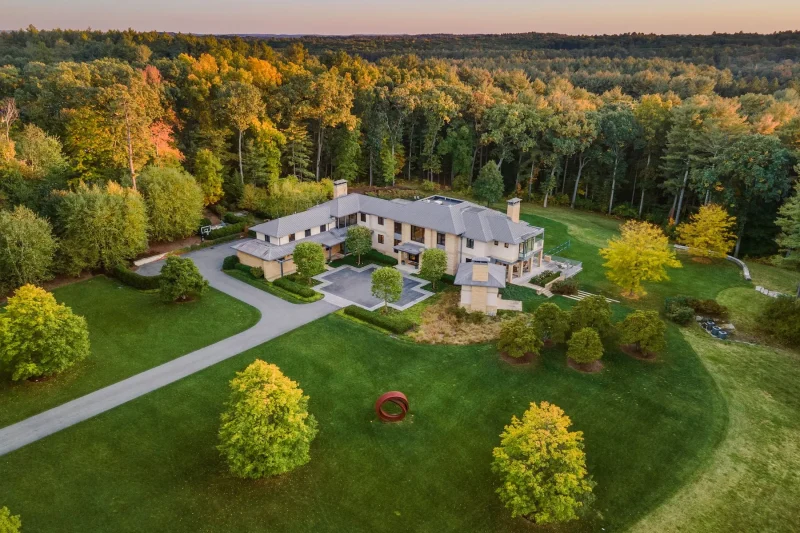The 30 Richest Neighborhoods in Alameda, CA
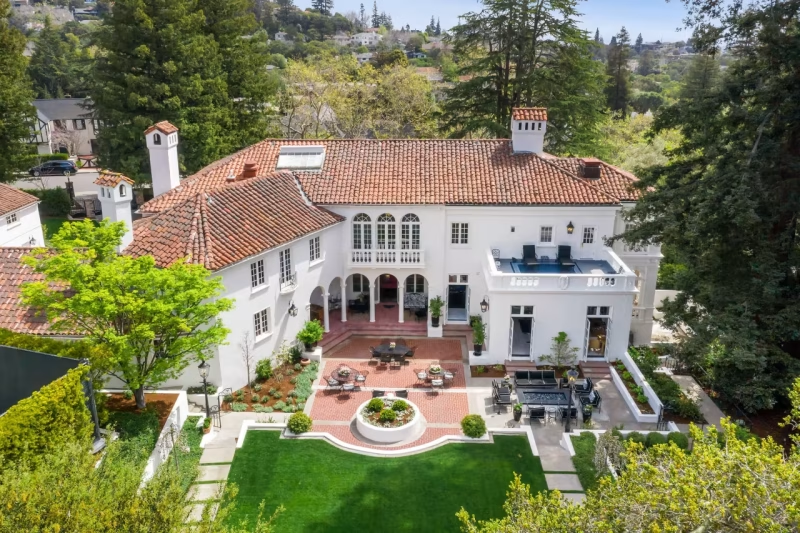
Alameda County represents one of the most economically diverse regions in the San Francisco Bay Area, encompassing everything from affluent hillside communities to bustling urban neighborhoods.
The county stretches across varied terrain and includes major cities like Oakland and Berkeley, creating distinct pockets of wealth influenced by proximity to tech hubs, educational institutions, and geographic features.
This comprehensive analysis examines the thirty wealthiest neighborhoods in Alameda County, ranking them by median household income, property values, and economic indicators.
The rankings reveal how factors such as location, school districts, and community amenities contribute to neighborhood prosperity.
From established enclaves like Piedmont to emerging areas in the Oakland Hills, these neighborhoods demonstrate the county’s economic complexity and the various lifestyle preferences that drive residential choices throughout the region.
Here are the 30 richest neighborhoods in Alameda County, CA, reordered from #30 to #1:
1. Piedmont

Piedmont stands as Alameda County’s wealthiest community and one of California’s most affluent cities. This small residential enclave is entirely surrounded by Oakland yet maintains its distinct character.
The city reports a median household income of $360,360, placing it among the state’s highest-earning communities. Home values reflect this prosperity, with median sale prices reaching $2,571,000.
Piedmont’s 10,600 residents benefit from top-rated schools and an exceptionally educated population. Approximately 84 percent of residents hold bachelor’s degrees or higher, significantly exceeding national averages.
The community is almost entirely residential, creating a quiet suburban atmosphere despite its urban location. This exclusivity contributes to limited housing inventory, with some months seeing only single-digit home sales.
Named after Italy’s Piedmont region, the city consistently ranks among California’s most desirable places to live.
2. Montclair District, Oakland
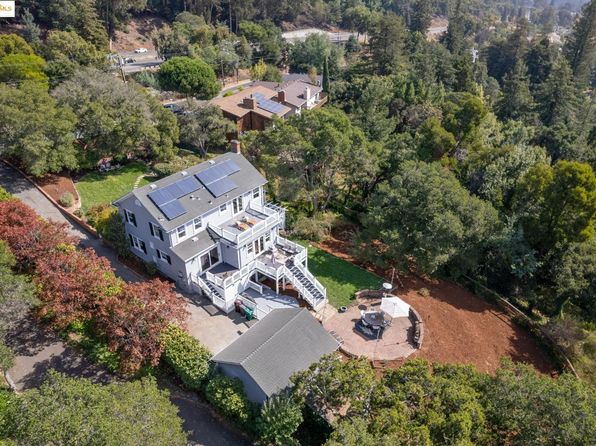
Montclair sits prominently among Oakland’s wealthiest neighborhoods, ranking fourth in the city’s most affluent areas. The hillside district spans the western slope of the Oakland Hills, stretching from the Hayward Fault valley to the upper ridges.
This prestigious neighborhood houses 6,022 residents in an area known for its sparse suburban character. Most residents own their homes, which command prices well above Oakland’s average of $733,779.
The district’s location along Highway 13 provides convenient access while maintaining its secluded feel. Winding roads and forested scenery distinguish Montclair from Oakland’s urban flatlands below.
Montclair offers residents numerous restaurants, coffee shops, and parks within its boundaries. The neighborhood sits approximately twenty minutes from downtown Oakland, surrounded by regional parks on three sides.
Large single-family homes dominate the residential landscape, contributing to the area’s reputation as coveted Bay Area real estate.
3. Claremont District, Oakland

The Claremont District straddles the city limits of Oakland and Berkeley in the East Bay. This affluent neighborhood ranks among Oakland’s top ten wealthiest areas.
The district has a population of approximately 2,859 residents. Most homeowners in Claremont enjoy a dense suburban atmosphere with tree-lined streets and well-maintained properties.
Claremont offers residents numerous upscale amenities. The neighborhood features quality restaurants, coffee shops, and parks that attract families and professionals.
The area’s proximity to both Oakland and Berkeley provides easy access to employment centers and cultural attractions. This strategic location contributes significantly to the neighborhood’s desirability and property values.
Home values in Claremont reflect its status as one of Alameda County’s premium residential areas. The neighborhood consistently attracts buyers seeking quality housing in an established community setting.
4. Sunol
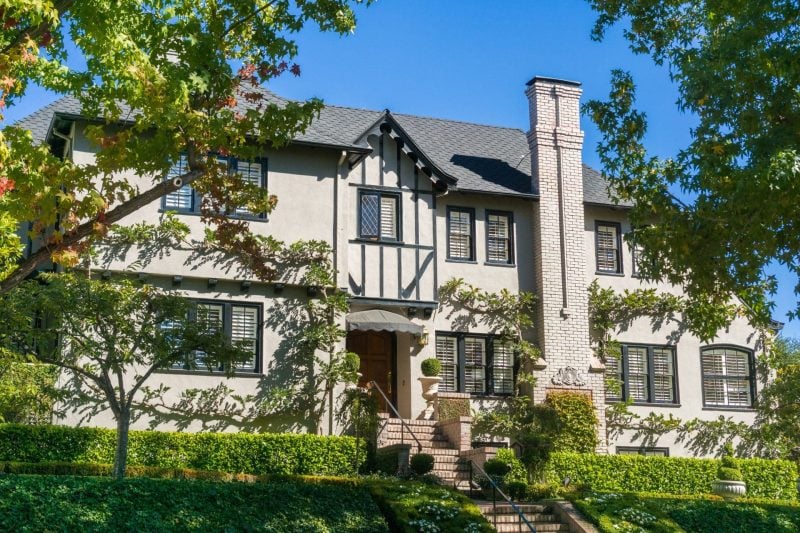
Sunol stands as the wealthiest city in Alameda County with a median household income of $171,667. This small community covers 27.75 square miles of land area in the eastern part of the county.
The city maintains an exclusive character with a population of approximately 956 residents as of recent census data. Its location near the center of California provides residents with both privacy and accessibility.
Sunol’s high income levels reflect the affluent nature of its residential base. The community represents one of the most financially successful areas within Alameda County’s diverse economic landscape.
Despite its small size, Sunol consistently ranks at the top of income statistics for the region. The area attracts residents who value both substantial earning potential and a quieter suburban lifestyle away from urban centers.
5. Lafayette (partially in Alameda County)
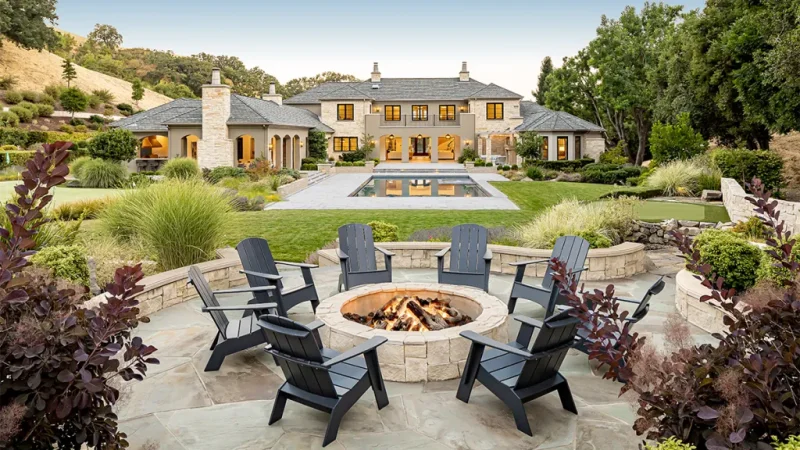
Lafayette straddles the border between Alameda and Contra Costa counties. The portion within Alameda County represents one of the area’s most affluent communities.
The city has a total population of 25,384 residents with a median age of 44.8 years. Average individual income reaches $97,946 according to U.S. Census data.
Lafayette earned recognition as one of America’s 25 richest cities based on median household income. It ranks among 11 Bay Area cities that achieved this national distinction.
The community attracts high-income professionals and families seeking upscale suburban living. Well-maintained neighborhoods feature premium housing stock and mature landscaping.
Residents benefit from excellent schools and recreational amenities. The city maintains numerous parks and hiking trails throughout its boundaries.
Lafayette’s strategic location provides convenient access to major employment centers. Commuters can reach San Francisco and other Bay Area destinations efficiently.
6. Northwest Berkeley

Northwest Berkeley ranks among the wealthiest neighborhoods in Alameda County and the broader Bay Area. The area consistently places in the top 15% of highest income neighborhoods nationwide.
This Berkeley neighborhood demonstrates higher income levels than 89.3% of neighborhoods across America. The median household income significantly exceeds both county and national averages.
Real estate values reflect the area’s affluence, with median home prices reaching $944,454. These prices far surpass the national median of $318,879, indicating strong property values and desirability.
Northwest Berkeley attracts high-earning residents who value the neighborhood’s proximity to UC Berkeley and San Francisco. The community features well-maintained streets and established residential areas.
The neighborhood’s economic strength positions it as one of Alameda County’s premium residential locations. Income levels and property values consistently place Northwest Berkeley among the region’s most prosperous communities.
7. Albany Hills
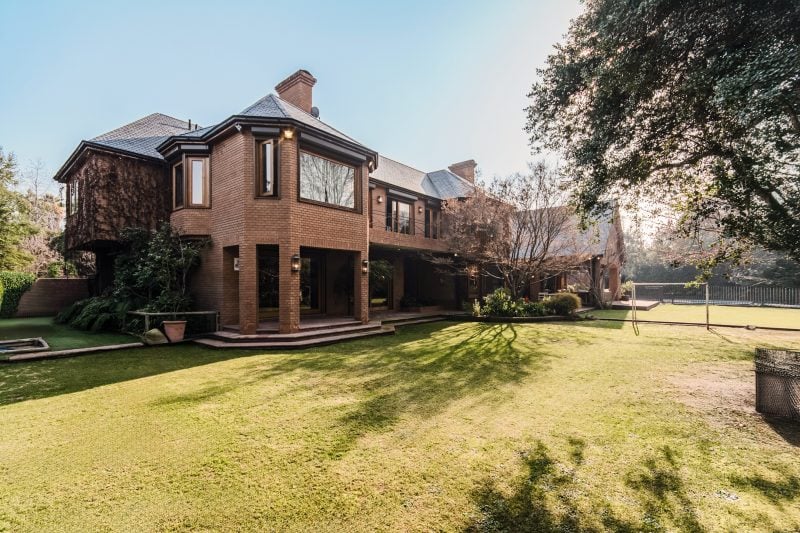
Albany Hills stands as one of Alameda County’s most desirable residential areas. The neighborhood features elevated terrain with stunning views of San Francisco Bay and the Golden Gate Bridge.
Home values in Albany Hills consistently rank among the highest in the region. The area attracts affluent professionals who value proximity to both San Francisco and Berkeley.
Properties here include mid-century modern homes and contemporary residences. Many homes sit on larger lots compared to other Bay Area neighborhoods.
The location provides easy access to top-rated schools and outdoor recreation. Residents enjoy hiking trails and parks throughout the hillside community.
Albany Hills maintains a quiet suburban atmosphere while remaining well-connected to major employment centers. The neighborhood’s combination of natural beauty and urban accessibility contributes to its high property values and wealthy demographics.
8. Thousand Oaks, Berkeley

Thousand Oaks stands as one of Berkeley’s most affluent neighborhoods, ranking among the top 15% highest income areas in America. The neighborhood has a higher income than 87.3% of communities nationwide.
Located at the base of the Berkeley Hills at 239 feet elevation, this North Berkeley community houses 6,789 residents. Most residents own their homes in this urban-suburban neighborhood.
The area features distinctive stone urns and neighborhood paths from its 1920s development. Indian Trail path connects The Alameda to Great Stone Face Park, maintained by the Thousand Oaks Neighborhood Association.
Residents enjoy exceptional longevity, with North Berkeley areas including Thousand Oaks reporting an average life expectancy of 93 years. This represents approximately 16 years longer than less wealthy Bay Area neighborhoods.
The neighborhood offers an exclusive residential environment with access to Berkeley’s amenities and proximity to the Berkeley Hills.
9. Oakland Hills
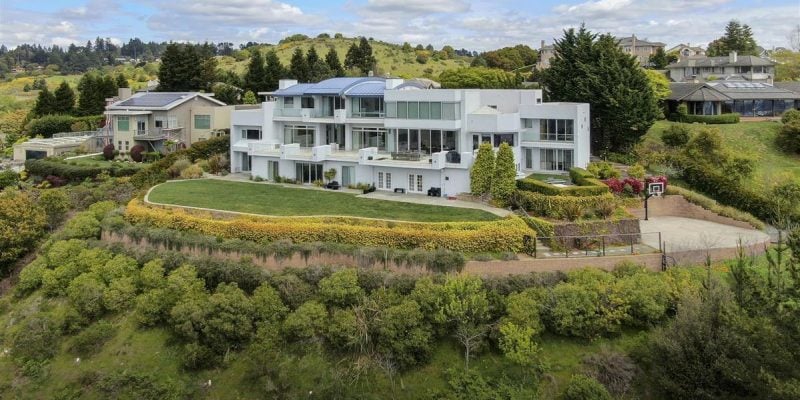
The Oakland Hills represent a cluster of affluent neighborhoods situated between Oakland’s flatlands and the East Bay Regional Park District. These areas occupy the highest elevations within the city limits.
The hills contain some of Oakland’s most prosperous residential areas. Property values in these neighborhoods significantly exceed those found in the flatlands closer to San Francisco Bay.
Notable areas within the Oakland Hills include the Montclair district, which ranks among the wealthiest sections of Oakland. The terrain and elevation provide residents with scenic views and a more secluded residential environment.
The geographical advantage of hillside locations contributes to higher real estate values. These neighborhoods attract affluent residents seeking both proximity to urban amenities and a more suburban atmosphere within Oakland’s boundaries.
10. Merritt College Neighborhood, Oakland
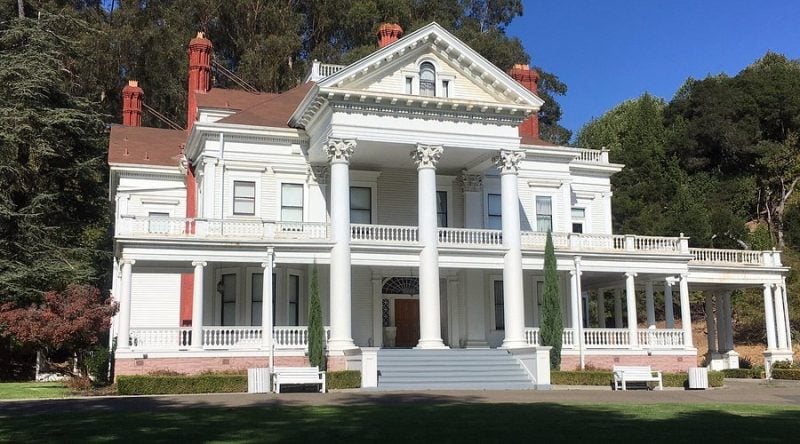
The Merritt neighborhood in Oakland represents an established residential area with moderate property values compared to other affluent Alameda County communities. This neighborhood houses approximately 2,494 residents and maintains a dense urban character.
Property values in Merritt reflect its middle-income status. The median real estate price stands at $628,978, positioning it below many premium California neighborhoods.
Rental costs average $2,909 monthly, making it more affordable than higher-end areas. The neighborhood offers lower housing costs compared to 63.6% of California communities.
Merritt provides urban amenities including restaurants, coffee shops, and parks. The area maintains walkable streets with convenient freeway access for commuters.
The neighborhood attracts residents seeking urban living at moderate price points. Most residents rent rather than own their homes, reflecting the area’s rental market dynamics.
11. Rockridge, Oakland
Rockridge stands as one of Oakland’s most affluent residential neighborhoods. The area sits east of Telegraph Avenue and west of the Oakland Hills, bordering Berkeley to the north.
The median home price in Rockridge reaches $1,623,296. This makes properties significantly more expensive than the national median of $318,879.
The neighborhood attracts wealthy residents with its tree-lined streets and upscale amenities. College Avenue features an array of gourmet restaurants, boutique shops, and artisanal coffee establishments.
Rockridge offers excellent walkability and public transit access. The BART station provides convenient connections throughout the Bay Area.
The western portions of the neighborhood command the highest property values. More affordable options exist in the southeastern areas, though prices remain well above regional averages.
12. Temescal, Oakland
Temescal ranks as one of Oakland’s more affluent neighborhoods with a median household income of $101,857. This places the area in the 80th percentile nationally, well above the U.S. median income.
The neighborhood attracts highly educated residents, with 73% holding bachelor’s degrees or higher. This educational attainment significantly exceeds the national average of 31%.
Located in North Oakland along Telegraph Avenue, Temescal combines historic charm with modern amenities. The area features a mix of Craftsman and Mediterranean-style homes alongside newer apartment developments.
Residents enjoy an urban-suburban lifestyle with walkable access to numerous restaurants, bars, and coffee shops. The neighborhood’s proximity to the MacArthur BART station provides convenient transit options.
Temescal’s commercial district along Telegraph Avenue has experienced significant revitalization, becoming a popular destination for dining and entertainment.
13. Fruitvale, Oakland
Fruitvale is located approximately four miles southeast of downtown Oakland. The neighborhood serves as home to the city’s largest Hispanic community, with Hispanics comprising 53.8% of the population.
The median household income in Fruitvale is $54,138. This places the neighborhood in the 34th percentile for household incomes nationally, below the median income in the United States.
Education levels in Fruitvale show 19% of adults hold bachelor’s degrees or higher. This compares to 31% nationwide, indicating lower educational attainment than the national average.
The neighborhood operates under ZIP code 94601. Fruitvale was formerly known as Brays and originally called Fruit Vale before adopting its current name.
The area is situated about two miles southeast of Lake Merritt. Fruitvale represents a vibrant community within Oakland’s diverse neighborhood landscape.
14. Crocker Highlands, Oakland
Crocker Highlands ranks among Oakland’s most affluent neighborhoods with a median home price of $1.80 million. The area sits within the Lower Hills District between the 580 and 13 freeways.
The neighborhood features tree-lined streets and beautiful homes nestled in hilly terrain. Many properties include well-maintained front gardens that distinguish the area from other Oakland neighborhoods.
Crocker Highlands borders Piedmont to the north and Grand Lake to the west. The location provides residents convenient access to shops, restaurants, and amenities throughout Oakland.
Crime rates remain relatively low compared to other parts of the city. Families are drawn to the area’s proximity to Crocker Highlands Elementary, which receives high ratings on school assessment websites.
The neighborhood’s combination of safety, location, and housing quality makes it a desirable destination for affluent buyers in Oakland.
15. San Leandro Hills
San Leandro Hills ranks among the wealthiest neighborhoods in Alameda County. This elevated residential area sits in the eastern portion of San Leandro.
The neighborhood features rolling terrain that provides natural separation from busier parts of the city. Bay-O-Vista communities within this area command premium prices due to their scenic locations.
Residents enjoy expansive bay views from many properties. The elevated position offers clear sightlines across the San Francisco Bay toward the Peninsula.
Wide streets with minimal traffic characterize the neighborhood’s layout. This design creates a quieter residential environment compared to other San Leandro areas.
The real estate market reflects the area’s desirability through consistently higher home values. Properties here typically represent some of San Leandro’s most expensive residential offerings.
16. Hayward Hills
Hayward Hills is a picturesque subdivision located in the heart of Hayward, California. This neighborhood sits within Alameda County and offers residents stunning views and a serene atmosphere.
The community has a population of 14,729 people with a median age of 42.7 years. The average individual income in Hayward Hills is $61,406 according to U.S. Census data.
Residents enjoy a blend of suburban tranquility and urban convenience. The neighborhood provides easy access to the vibrant culture of the Bay Area while maintaining its peaceful character.
Hayward Hills is known for its elevated location that offers scenic vistas of the surrounding area. The community attracts families and professionals seeking a quieter residential environment within commuting distance of major employment centers.
17. Cherryland
Cherryland is an unincorporated community in Alameda County with a population of 14,575 residents. The area sits between Ashland to the north and Hayward to the south.
Home prices in Cherryland align closely with California’s state average of $648,235. This pricing reflects the community’s position as a middle-income neighborhood within the county.
The community offers residents an urban suburban mix with diverse housing options. Most residents rent their homes rather than own them.
Cherryland features numerous restaurants, coffee shops, and parks throughout the area. Many families choose to live in this established community.
The neighborhood is bounded by Foothill Boulevard to the east, Hampton Road to the north, and Meekland Avenue to the west. Smalley Avenue forms the southern boundary of this census-designated place.
18. Castro Valley West
Castro Valley West ranks among Alameda County’s more affluent neighborhoods. The area attracts homebuyers with substantial purchasing power, as median home prices reach approximately $1.07 million.
This neighborhood sits within the broader Castro Valley community in unincorporated Alameda County. Residents benefit from the East Bay location, which provides suburban living while maintaining access to San Francisco and Oakland employment centers.
The West Castro Valley area offers established residential streets with mature trees and well-maintained properties. Local amenities include nearby parks, quality schools, and convenient shopping centers.
Housing stock consists primarily of single-family homes on substantial lots. The neighborhood’s appeal stems from its combination of residential tranquility and regional connectivity.
Castro Valley West continues to draw families and professionals seeking upscale suburban living in Alameda County’s competitive real estate market.
19. Fairview
Fairview is a peaceful unincorporated community located in Alameda County. The area serves as a tranquil enclave with approximately 10,033 residents and an average age of 45.
This neighborhood attracts families seeking quieter suburban living while maintaining proximity to larger Bay Area cities. Fairview offers excellent schools and beautiful natural surroundings that appeal to residents.
The community features well-maintained residential areas with moderate to high property values. Many homes sit on larger lots compared to more densely populated nearby cities.
Fairview’s location provides convenient access to major employment centers while offering a more relaxed residential atmosphere. The area maintains its suburban character with tree-lined streets and established neighborhoods.
Residents benefit from the community’s proximity to regional parks and open spaces. The neighborhood combines residential appeal with natural beauty typical of Alameda County’s more affluent areas.
20. San Lorenzo
San Lorenzo is a census-designated place located in the East Bay region of Alameda County. The unincorporated community sits along the banks of San Lorenzo Creek in the San Francisco Bay Area.
This diverse suburban community offers more affordable living options compared to many other areas in Alameda County. San Lorenzo provides residents with suburban charm while maintaining accessibility to the broader Bay Area region.
The neighborhood attracts families and individuals seeking housing alternatives that remain within reasonable price ranges. San Lorenzo’s location in Alameda County positions it within a county where home prices typically exceed California’s state average of $648,235.
Real estate market data and demographic information indicate San Lorenzo serves as a residential community with varied housing stock. The area maintains its appeal through a combination of affordability and suburban characteristics that distinguish it from more expensive Alameda County locations.
21. East Oakland Hills
East Oakland Hills represents one of the more affluent areas within Oakland’s diverse landscape. The neighborhood sits in the elevated terrain that characterizes Oakland’s wealthier districts.
Residents enjoy hillside living with expansive views of the San Francisco Bay. The area features larger lots and more spacious homes compared to Oakland’s flatland neighborhoods.
Property values in East Oakland Hills reflect its desirable location and topography. The neighborhood attracts families seeking quality housing within Oakland’s boundaries.
The hills provide a buffer from urban density while maintaining access to Oakland’s amenities. Tree-lined streets and natural surroundings create a suburban atmosphere within the city limits.
East Oakland Hills benefits from its position in Oakland’s northeast section where affluent neighborhoods cluster. The area combines residential privacy with proximity to major Bay Area employment centers.
22. Golden Gate, Oakland
Golden Gate sits in Oakland’s northwest corner, bordered by Berkeley to the north and Emeryville to the west. The neighborhood has a population of 4,537 residents according to recent data.
This area encompasses three historic sections: Golden Gate, Paradise Park, and Gaskill. The Golden Gate Shopping District runs along San Pablo Avenue between 53rd Street and 67th Street.
The neighborhood offers a dense urban environment with numerous bars, restaurants, coffee shops, and parks. Most residents rent their homes rather than own them.
Golden Gate provides convenient access to neighboring affluent areas like Berkeley and Emeryville. The location benefits from proximity to major employment centers and transportation corridors.
The area is experiencing revitalization with new businesses and cultural activities. This ongoing development suggests potential for future property value appreciation in the district.
23. Jack London Square, Oakland
Jack London Square sits at the south end of Broadway along Oakland’s waterfront. The neighborhood spans across the Oakland Estuary from Alameda, serving as the city’s only publicly accessible mixed-use waterfront district.
This historic area has transformed significantly over the past decade. Former industrial spaces now feature loft conversions and new construction developments.
The district offers marina views, dining establishments, and entertainment venues. Residents enjoy outdoor recreation opportunities along the estuary waterfront.
Jack London Square functions as Oakland’s original downtown neighborhood. The area blends its industrial heritage with modern residential and commercial developments.
The neighborhood attracts both visitors and residents seeking waterfront living. Its mixed-use nature provides convenient access to shops, restaurants, and marina facilities within walking distance.
Housing options include converted warehouse lofts and newer residential buildings. The area’s ongoing development continues to enhance its appeal as a lifestyle destination.
24. Elmhurst, Oakland
Elmhurst is a residential neighborhood located in the southernmost part of Oakland, California. The area was originally an independent unincorporated town before being annexed by Oakland in 1909.
The neighborhood sits at an elevation of 39 feet and is positioned between San Francisco Bay and Anthony Chabot Regional Park. Today, Elmhurst is considered part of East Oakland and functions as a planning district.
The median home price in Elmhurst is approximately $582,000, making it accessible to middle-income buyers. The area consists predominantly of single-family homes with varied architectural styles.
Elmhurst offers residents easy access to dining and entertainment options in neighboring San Leandro. The neighborhood maintains a family-friendly atmosphere and provides convenient access to regional parks and bay area amenities.
The community is known for its diverse food scene and urban character while maintaining residential qualities.
25. Dimond District, Oakland
The Dimond District is a residential neighborhood centered on the intersection of MacArthur Boulevard and Fruitvale Avenue in East Oakland. This quiet community sits in the Oakland Hills area of Alameda County.
The neighborhood has a population of approximately 1,689 residents. Most residents rent their homes rather than own them, creating an urban-suburban mixed environment.
The district offers numerous restaurants, coffee shops, and parks for residents. Families and young professionals make up a significant portion of the community demographics.
The area maintains a strong neighborhood identity with local events like the annual Oaktoberfest celebration. Public schools in the Dimond District receive above-average ratings compared to other Oakland neighborhoods.
Real estate values in the Dimond District reflect its position as a middle-income neighborhood within Oakland’s diverse housing market. The community balances affordability with access to urban amenities and green spaces.
26. Eastmont, Oakland
Eastmont is a neighborhood in Oakland with a population of 4,069 residents. The area sits at an elevation of 95 feet and was formerly an unincorporated community before becoming part of Oakland.
The median real estate price in Eastmont is $702,146. This makes it less expensive than 67.5% of California neighborhoods. However, homes here cost significantly more than the national median.
Average rental prices in Eastmont currently stand at $3,328 per month. These rents are lower than 48.5% of California neighborhoods.
The neighborhood offers an urban suburban mix environment. Most residents rent their homes rather than own them. Eastmont features numerous parks and attracts many families.
The area tends to attract liberal-leaning residents. Its location in Alameda County provides access to the broader Bay Area economy while maintaining a neighborhood feel.
27. Brookdale, Oakland
Brookdale is a residential neighborhood located in Oakland, California. The area stands out for its educated population, with 42% of adults holding bachelor’s degrees or higher compared to 31% nationwide.
The neighborhood demonstrates strong economic performance relative to national standards. Only 5% of cities nationwide have higher median household incomes than Brookdale.
Median income in Brookdale varies by location within the neighborhood. Income levels range from $109,375 to $113,092 across different areas.
Education levels correlate strongly with the area’s income patterns. This connection reflects broader economic trends where higher education typically leads to increased earning potential.
The neighborhood maintains its position as one of Oakland’s more affluent areas. Brookdale’s combination of educated residents and above-average incomes contributes to its economic stability.
28. Laurel District, Oakland
The Laurel District ranks as a middle-income neighborhood in Oakland with a median household income of $71,983. This places residents in the 56th percentile nationally for household earnings.
The neighborhood sits at 226 feet elevation between High Street and 35th Avenue. It borders Allendale, Redwood Heights, Dimond District, and Maxwell Park areas.
Education levels exceed national averages with 36% of adults holding bachelor’s degrees or higher. The national average stands at 31%.
MacArthur Boulevard serves as the commercial heart of this tight-knit community. The district features boutique retailers, restaurants, bars, and spas with diverse business ownership.
The area offers tree-lined residential streets combined with urban conveniences. An annual Laurel StreetFair celebrates local talent and culture.
Real estate listings show active home sales through major platforms. The neighborhood provides a blend of residential living and commercial amenities.
29. Deep East Oakland
Deep East Oakland represents the furthest eastern reaches of Oakland, extending beyond traditional East Oakland boundaries. The neighborhood emerged from the ongoing debate about where East Oakland officially begins and ends.
This area sits at the lower end of Alameda County’s income spectrum. Deep East Oakland faces economic challenges that place it among the county’s more modest neighborhoods in terms of household wealth.
The neighborhood consists primarily of working-class families and long-term residents. Housing costs remain relatively affordable compared to other parts of Oakland and Alameda County.
Deep East Oakland’s position as number 29 on this list reflects its economic realities. The area has seen some investment in recent years but continues to lag behind Oakland’s wealthier districts in median household income.
30. West Oakland
West Oakland represents one of the more affordable neighborhoods in Alameda County. The area has experienced significant changes over recent decades as part of Oakland’s broader urban development.
The neighborhood has a population of approximately 22,170 residents with an average age of 36. This demographic profile reflects a relatively young community within the county.
West Oakland’s median household income falls below many other areas in Alameda County. The neighborhood encompasses zip codes 94607 and 94608.
The area has undergone various revitalization efforts in recent years. These initiatives have focused on improving housing conditions and community infrastructure.
West Oakland’s position within Oakland provides residents access to transportation networks and urban amenities. The neighborhood maintains its distinct character while adapting to changing economic conditions in the broader Bay Area market.
Economic Factors Influencing Alameda County’s Wealthiest Neighborhoods
Alameda County’s affluent neighborhoods benefit from robust real estate markets driven by proximity to major tech employers and San Francisco. High-income sectors like technology and professional services concentrate wealth in eastern areas, while premium amenities and top-rated schools further enhance property values.
Real Estate Trends and Home Values
Eastern Alameda County commands the highest property values due to location advantages and employment proximity. Areas near major tech corridors experience consistent appreciation rates above county averages.
Key Value Drivers:
- Proximity to Silicon Valley employers
- Limited housing inventory
- Historical appreciation rates
- Zoning restrictions maintaining exclusivity
The median income ranges from $11,123 to $250,001 across county neighborhoods, with eastern areas capturing the upper tier. This income disparity directly correlates with housing costs and neighborhood desirability.
Luxury neighborhoods benefit from low inventory turnover. Established residents rarely sell, creating scarcity that drives values higher.
Geographic constraints limit new development in premium areas. Hills, protected lands, and existing zoning preserve neighborhood character while restricting supply.
Employment Sectors and Income Sources
Technology sector employment drives wealth concentration in Alameda County’s premium neighborhoods. Major companies in Silicon Valley and San Francisco provide high-paying positions that support luxury housing markets.
Primary Wealth Sources:
- Technology: Software engineers, executives, product managers
- Finance: Investment banking, venture capital, private equity
- Professional Services: Legal, consulting, medical specialists
- Real Estate: Development, investment, property management
Alameda County sits within the nine-county Bay Area economic region. This positioning provides residents access to diverse high-income employment opportunities across county lines.
Stock options and equity compensation from tech companies create substantial wealth beyond base salaries. Many affluent residents benefit from company IPOs and acquisitions.
Entrepreneurship and business ownership contribute significantly to neighborhood wealth. Many residents founded or invested in successful startups.
Impact of Local Amenities and Services
Top-rated school districts anchor wealthy neighborhoods and justify premium home prices. Families pay substantial premiums to access highly-ranked elementary and secondary schools.
Premium Amenities Include:
- Award-winning public schools
- Private recreational facilities
- Upscale shopping and dining
- Country clubs and golf courses
- Parks and open space access
Quality municipal services maintain property values through superior infrastructure and public safety. Well-funded police and fire departments provide security that wealthy residents expect.
Transportation access to employment centers reduces commute times and increases desirability. Proximity to highways, BART stations, and airports adds convenience value.
Cultural amenities like museums, theaters, and recreational facilities attract affluent residents seeking lifestyle quality. These features distinguish premium neighborhoods from middle-income areas.
Lifestyle and Community Features
Alameda County’s wealthiest neighborhoods combine architectural heritage with modern amenities, featuring top-rated schools and extensive recreational facilities. These communities offer residents premium lifestyle elements including historic estates, nationally ranked educational institutions, and abundant green spaces.
Architectural Styles and Historic Influences
The richest neighborhoods in Alameda County showcase diverse architectural styles that reflect the region’s development history. Piedmont features grand Tudor Revival and Colonial Revival homes built in the early 1900s. Many properties display intricate stonework and expansive grounds.
Hillsborough residents enjoy Mediterranean and Spanish Colonial Revival estates. These homes often include red tile roofs, stucco exteriors, and elaborate courtyards. Property sizes frequently exceed two acres.
Atherton contains numerous Craftsman bungalows and contemporary custom designs. The town maintains strict architectural guidelines to preserve neighborhood character. Ranch-style homes from the 1950s have been extensively renovated with modern luxury features.
Several neighborhoods feature Mid-Century Modern influences from renowned architects. Eichler homes in Palo Alto areas command premium prices for their clean lines and floor-to-ceiling windows.
Educational Institutions and School Performance
Top-performing school districts serve Alameda County’s wealthiest communities. Piedmont Unified School District consistently ranks among California’s best with API scores above 900. The district maintains small class sizes and offers extensive Advanced Placement programs.
Las Lomitas Elementary School District in Atherton achieves exceptional test scores. Students transition to Menlo-Atherton High School, which provides International Baccalaureate programs.
Private institutions attract affluent families seeking specialized education. Castilleja School in Palo Alto serves girls grades 6-12 with college preparatory curricula. Crystal Springs Uplands School offers small class sizes and advanced STEM programs.
Many neighborhoods access Stanford University resources through community partnerships. Residents benefit from cultural events, continuing education programs, and research facilities.
Access to Parks, Recreation, and Green Spaces
Wealthy Alameda County neighborhoods provide extensive recreational amenities and natural spaces. Tilden Regional Park offers hiking trails, botanical gardens, and recreational facilities within minutes of Berkeley Hills communities.
Private country clubs serve as social and recreational hubs. Claremont Country Club features championship golf courses and tennis facilities. Members enjoy dining venues and event spaces for community gatherings.
Open space preserves protect natural landscapes throughout affluent areas. Woodside residents access Huddart Park with its redwood forests and equestrian trails. The preserve spans over 900 acres of protected wilderness.
Neighborhood parks and greenways encourage outdoor activities. Piedmont Park includes playgrounds, sports courts, and community centers. Many areas feature dedicated bike paths connecting residential zones to commercial districts.
Waterfront access distinguishes several premium communities. Tiburon residents enjoy Richardson Bay for sailing and kayaking. Private marinas serve yacht owners and recreational boaters.
